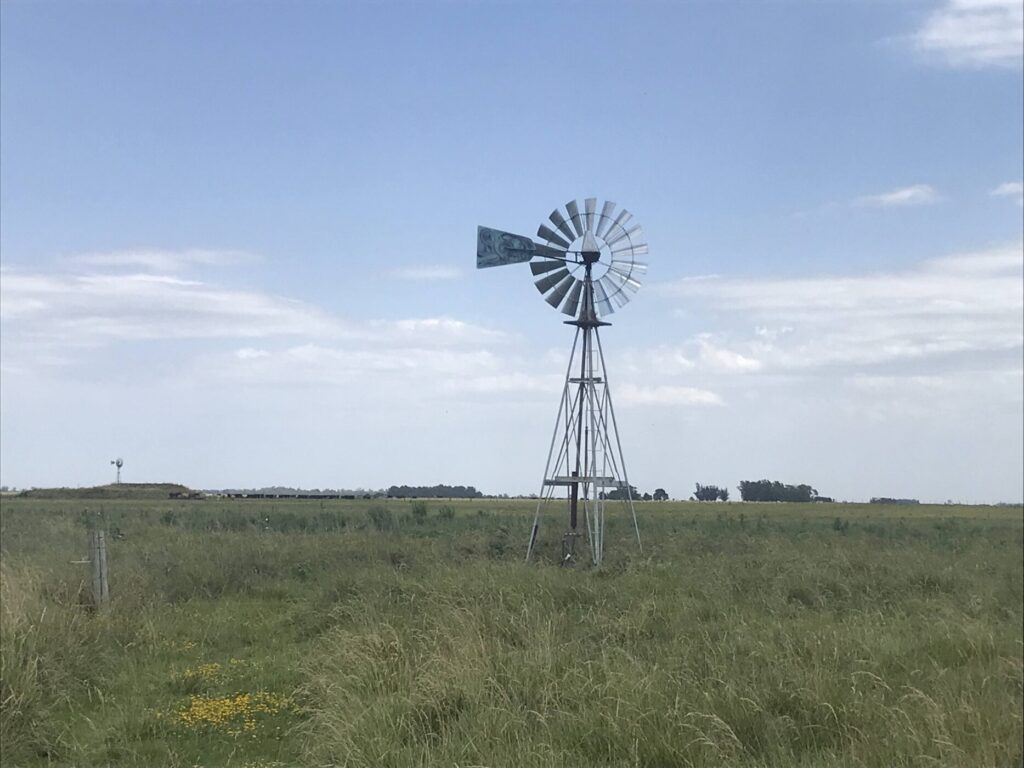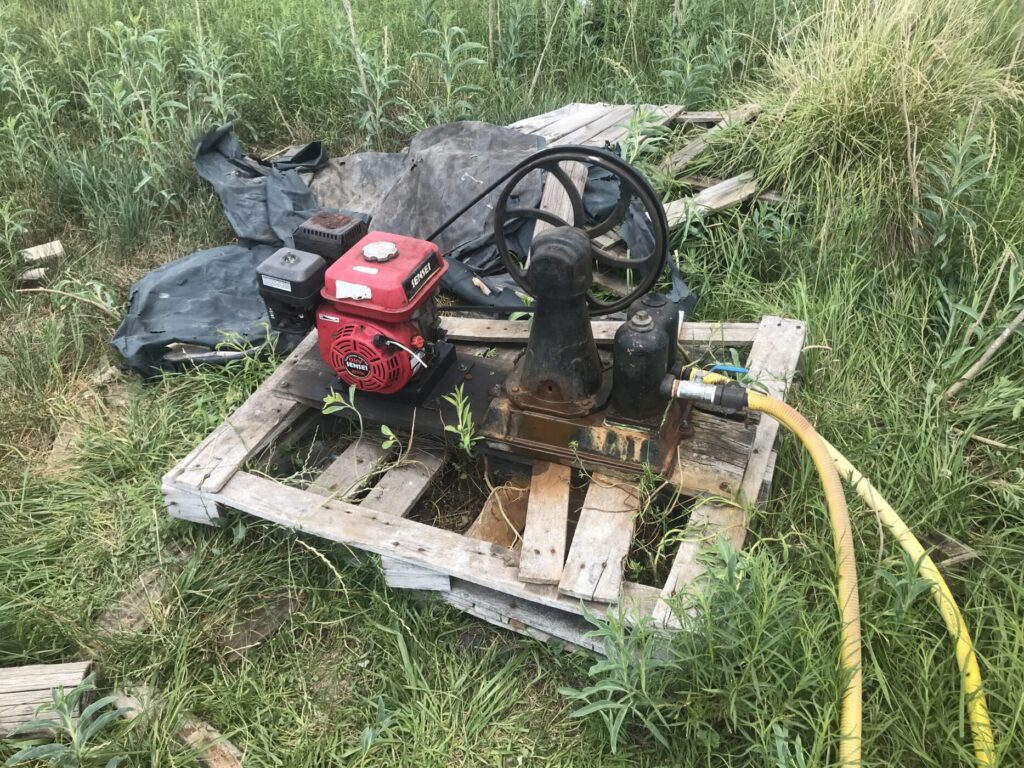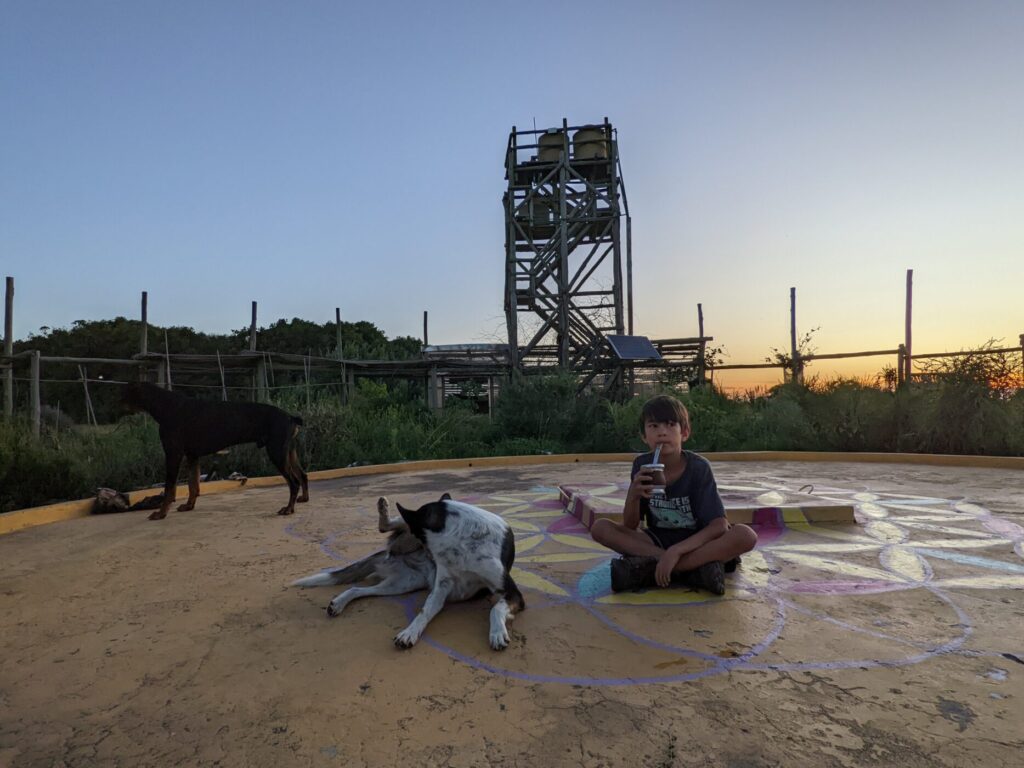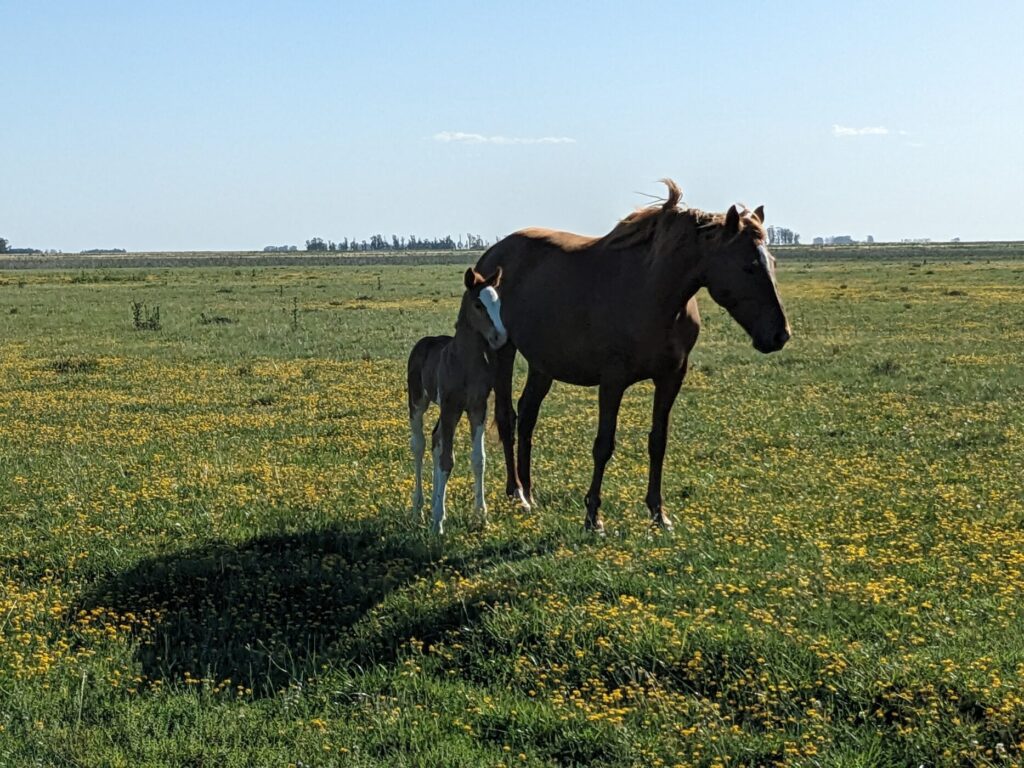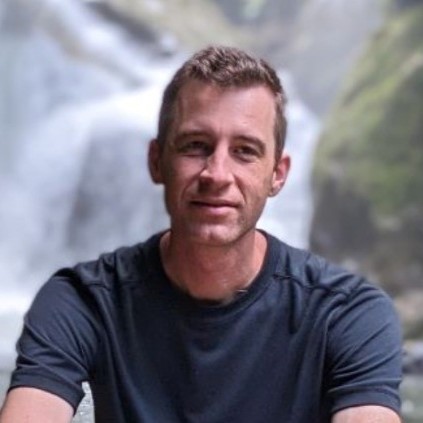5 Takeaways Volunteering at Quinta Esencia Permaculture Farm
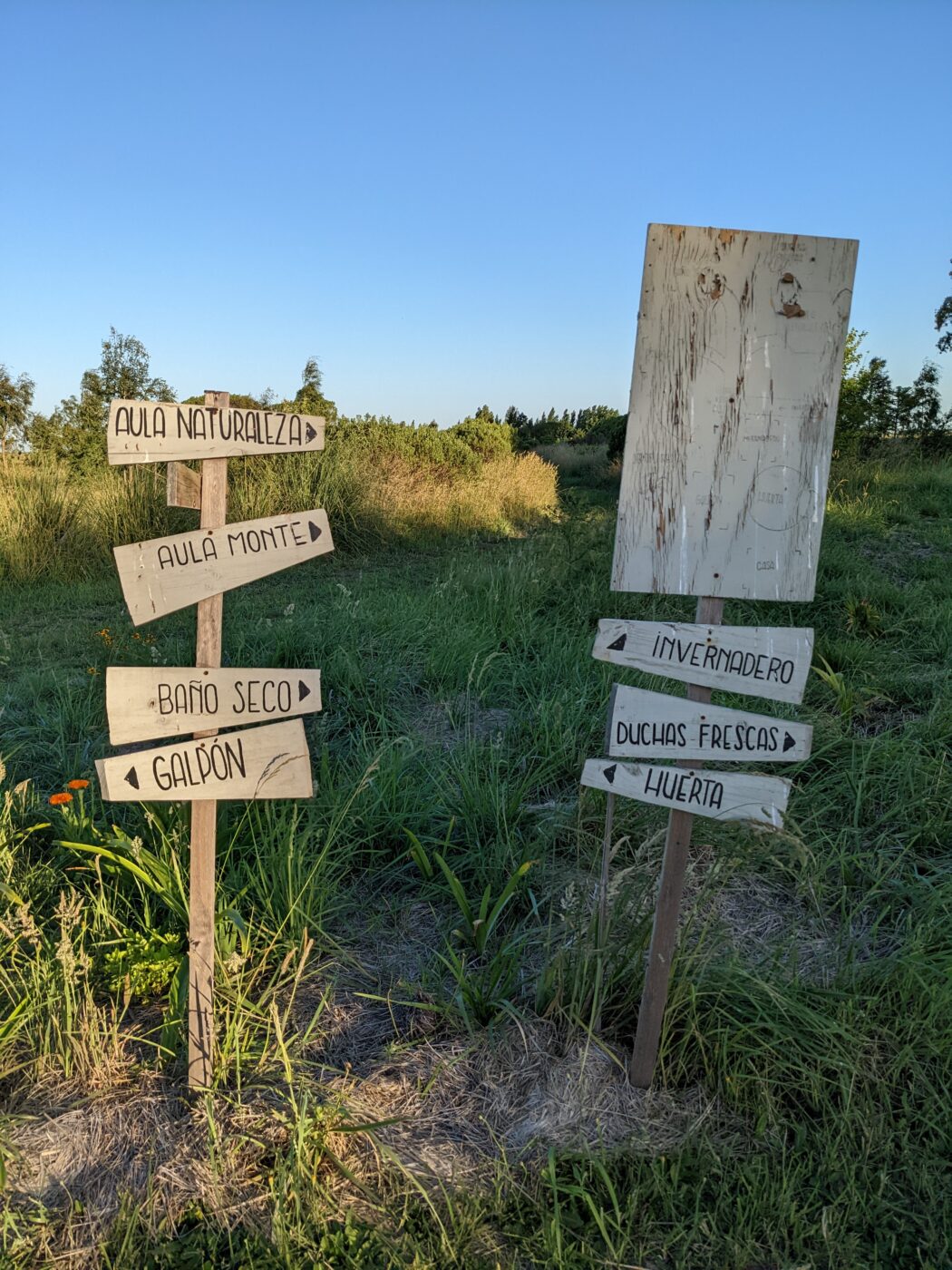
Our time at Quinta Esencia gave us a richer understanding of permaculture and how these projects operate. Here are my main takeaways.
What is Quinta Esencia?
The farm is located in the rural Pampas (grasslands) region of Argentina, six hours south of Buenos Aires by bus. The region is perfectly flat with few trees, checkered with fields of wheat and grazing cattle, and parched due to a recent drought. The founders envisioned Quinta Esencia as an oasis of native plants, healthy living, clean energy, and restorative agriculture in a desert of monocultures and destructive farming techniques.
The main complex is built in concentric circles. At the center is the yellow rainwater cistern with a large floral design painted on its surface. “Agua dulce is gold, don’t waste it,” we were warned. (Being so close to the sea, the groundwater is mildly salty. We used groundwater for the garden, the animals, and the showers so as not to use up the limited reserve of potable water).
Radiating out from the cistern are four concentric rings of raised-bed gardens. When we arrived, the garden and the paths in between were overgrown and neglected. Liuan, Ani (another volunteer), and I spent our first week pouring time, love, care, and sweat transforming a quadrant.
At the outer edge are the buildings: a bioconstructed house, a large toolshed, a greenhouse, and a tower supporting the potable water tanks.
One of the principles of permaculture is to obtain a yield. Kiki, one of the founders, explained a yield as a product offered to the outside world (versus merely being self-sufficient). We asked what Quinta’s yield was. His answer: knowledge and education. The farm is host to various retreats and workshops. They are currently constructing a Nature School on premise.
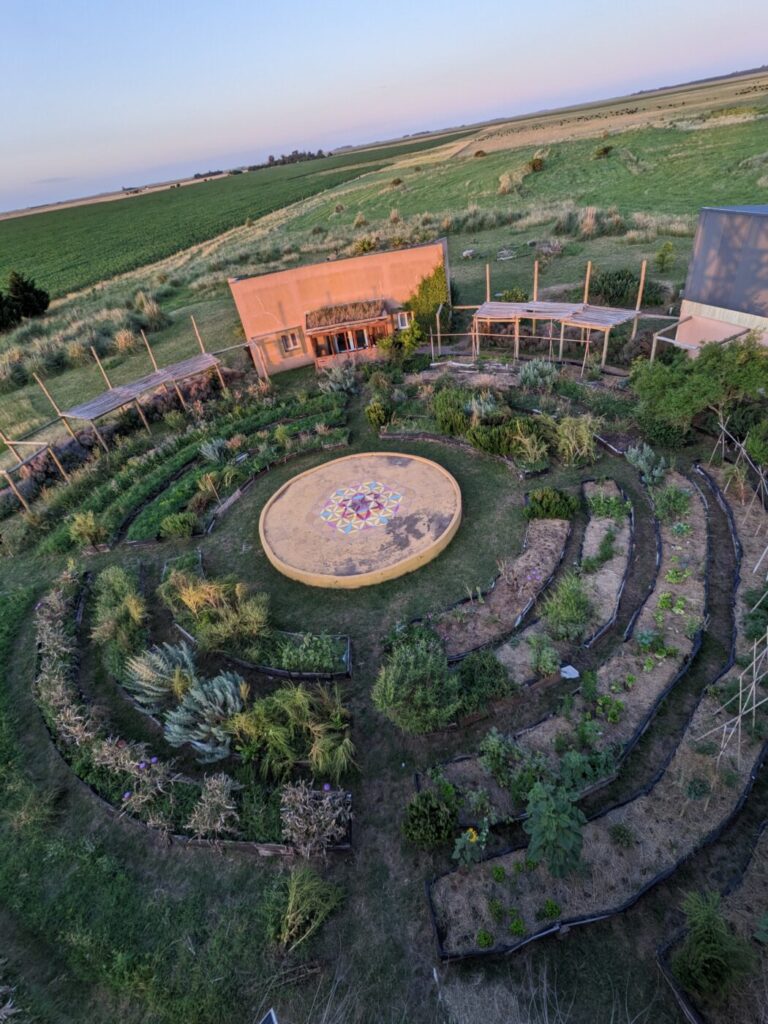
Our Experience as Volunteers
Quinta Esencia is the second permaculture farm we’ve visited on our family gap year. We stayed for two weeks.
While on the farm, the number of people fluctuated from as little as one or two other occupants (Ani, a fellow volunteer from Buenos Aires, and Pablo, one of the founders) to upwards of thirty people for a four-day yoga and healthy food retreat. Except for the four-day retreat, our family of five dominated the dinner table. Naturally, we prepared most of the meals.
Our family became close with Ani, the Argentine volunteer. We worked together, ate together, spent free time together, and even shared a day trip to Reserva Natural Paititi, another permaculture and conservation project.
There were no fixed hours. Our work days were fluid. We almost never worked in the afternoons because of the overbearing heat. After five in the afternoon, the cooler air and the long, drawn-out sunset revived our energy. As early evening approached, everyone sprung into action to take advantage of the most beautiful hours to be outdoors.
We rarely ate dinner before 8:30pm and often finished up after 10:30pm, as is the custom in Argentina.
We all had our responsibilities. I learned how to run the pump to fill the water tower when necessary. Liuan and I mostly took charge of meals (I baked a lot of bread). Oliver, who turned nine during our stay, took responsibility for feeding the chickens, collecting eggs, and closing the door to their pen for the night.
What follows are some of my main takeaways from this experience.
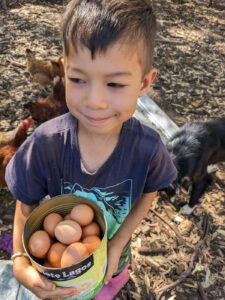
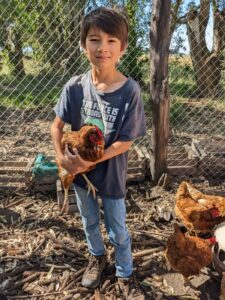
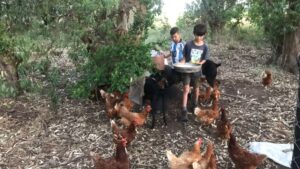
Takeaway #1: The Importance of Maintaining Native Habitats
A couple years back, Liuan voluntold me to cut down and root out all the buckthorn on our property. “It’s invasive,” she explained.
I resisted the idea. But they’re trees. Trees sequester carbon, improve the soil, provide natural climate control, yada yada. Trees take a long time to grow. Plus, I like them. Sure, they grow like a weed and are a bit unruly, but I prefer the jungle aesthetic to perfectly tidy rows of plants surrounded by mulch. What does “invasive” mean anyway? If it thrives here, who cares if it came from somewhere else?
Liuan was insistent I eradicate them. (A really tough job because they’re full of thorns — and probably the main reason for my resistance). In their place, she put in some sad little native transplants and surrounded them with mulch.
By the next summer, her “native garden” had filled out. “Look at all the insects and butterflies,” she marveled. I had to admit, it didn’t look bad.
The lightbulb flickered on a bit as we walked through the small forest “reserve” at Quinta and I noticed the cacophony of an abundant and diverse bird population in the canopy. “This is the only habitat they’ve got for miles around,” one of our hosts replied when I commented on this.
But it really clicked when we took our tour of the other farm, Paititi. Our host, Esteban, took us on a hike through his reserve. We stopped within a beautiful stand of tall acacia trees surrounded by laurel shrubs. It was quiet. The forest floor was clean. It gave me the feeling of standing in a majestic natural cathedral.
“All of this needs to be removed,” our host explained discordantly. Acacia is invasive. Its canopy is a blackout curtain. It infuses the soil with herbicides to block anything else from growing. “I challenge you to try to find a blade of grass here,” Esteban said.
Indeed, there wasn’t a blade of grass to be seen on the forest floor. The only other species present was the laurel. Also invasive. There were exactly two species of macroscopic life in this forest: acacia and laurel.
Being non-native, it couldn’t support the native cast of insects, animals, and other regional flora. It was tidy and silent, I thought — like a graveyard.
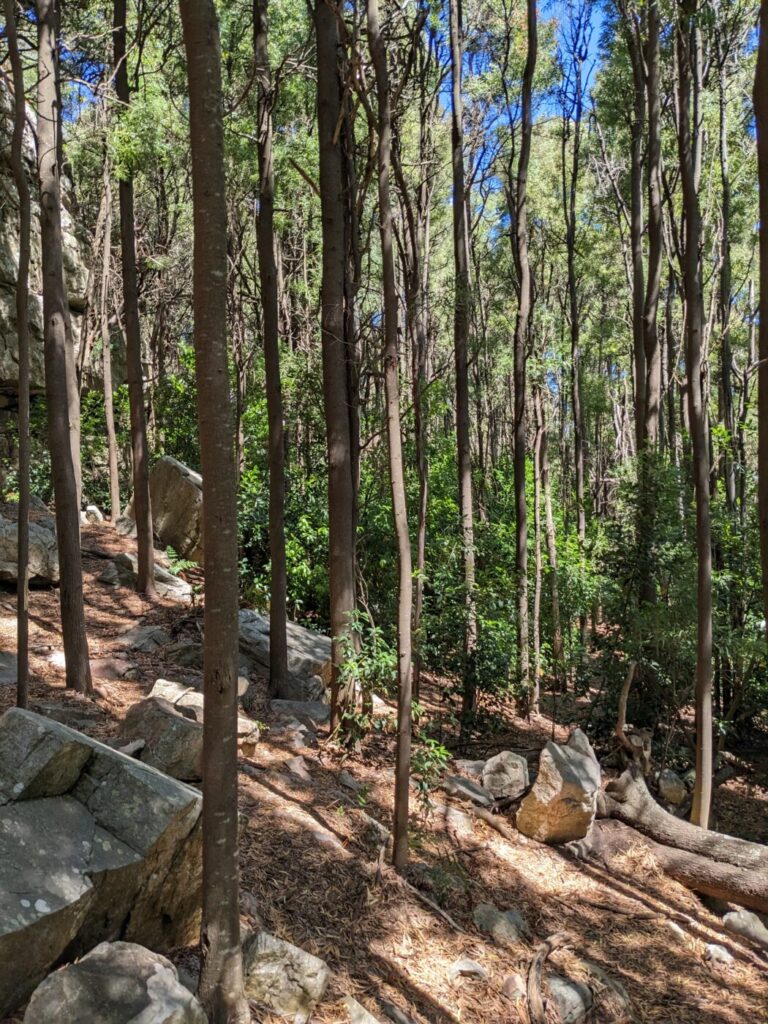
Takeaway #2: There are Many Niches In the Permaculture Space
There are no cure-alls to the urgent problems we face on this planet. That sounds hopeless, but maybe there’s a bright side. Rather than relying on an elite few, we must lean on wide variety of skills, passions, and experiments. That gives all of us a potential shot at being part of the solution in a way that’s uniquely our own.
Because none of the projects present a sure-fire fix, it’s tempting to write them off as virtuous but ineffective, particularly on a large scale.
I keep looking for the solution — be it agricultural, lifestyle, or infrastructure — that is not only effective, but so attractive it is goes viral. What would that look like? Something easy (or at least possible) to implement on a large scale. Highly profitable. Works with the grain of human ambition instead of forcing us to tighten our belts. “A vision of more, not less,” as the New York Time’s Ezra Klein puts it.
Needless to say, I haven’t found that cure-all yet. Nor, apparently, has anybody. But I’m learning to appreciate each project for what it is. A small, but important, contribution.
At Eco Caminhos we saw a pioneering model for generating a profit through agroforestry, while also achieving a social impact.
At Quinta Esencia, they thrive on nurturing human networks. Through educational retreats, workshops and classes, they generate a buzz among its participants and till the soil for good conversations.
It is human cooperation that made us the superspecies of our era, ushering an age of positive economic development as well as an urgent environmental crisis. Therefore, it seems only logical that human cooperation will be our best hope going forward.
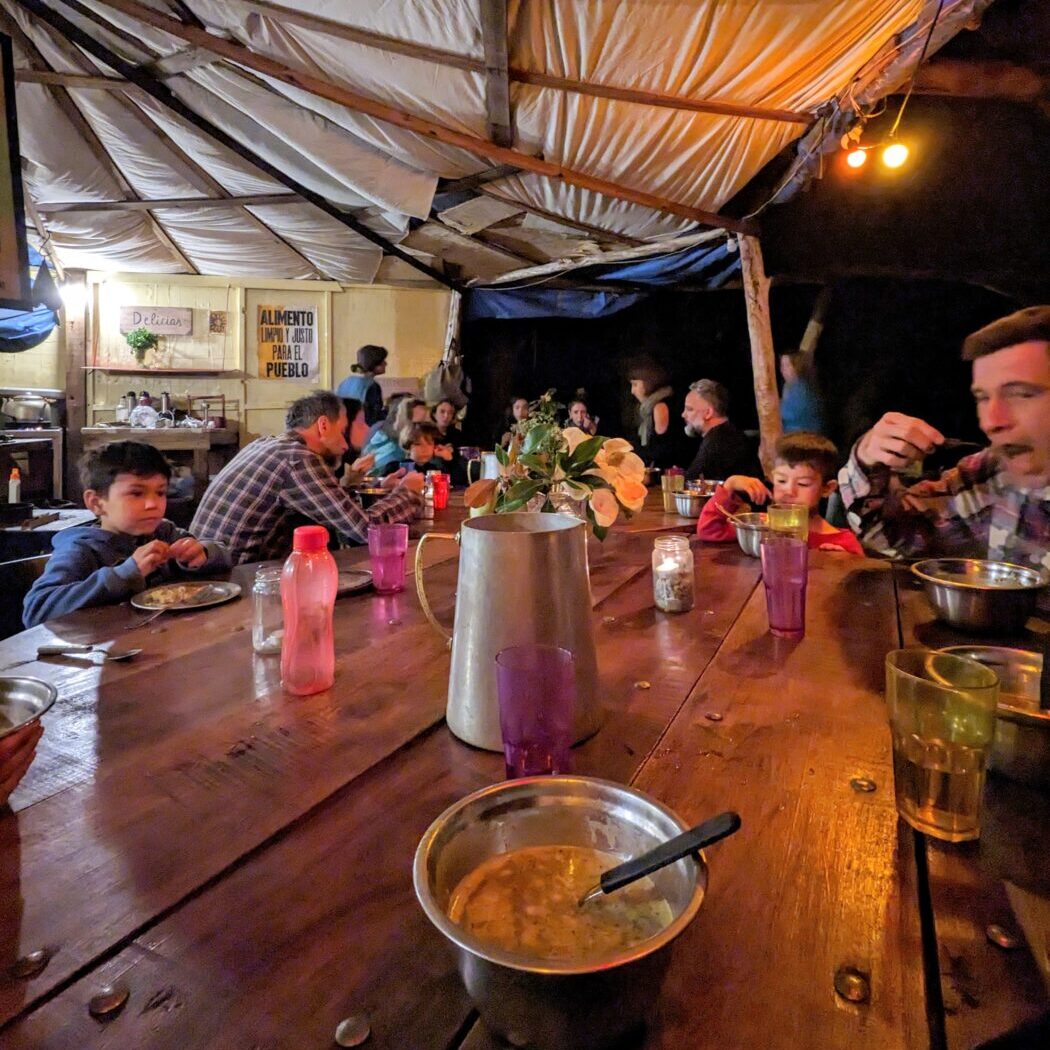
Takeaway #3: Everywhere Can Be Beautiful
After spending four months in the otherworldly beauty of Brazil’s Atlantic coast, I was ready to be underwhelmed by Argentina’s flat, treeless farmland. And indeed, peering out the window of our bus, I had to keep reminding myself that we weren’t just cruising through central Illinois’ endless cornfields.
But Quinta Esencia, with its shady forest reserve, lavender and rosemary bushes, quirky bioconstructed architecture, and a panoramic view of the grasslands stretching out to the horizon, was pleasing to all the senses.
And those sunsets! Unlike in the mountains, where sunsets are gorgeous but quick, these lasted for an hour or more, painting the sky with a subtly shifting gradient from orange to cornflower blue to indigo.
Even some of the difficulties of the locale added complexity to the beauty. The lack of infrastructure in the region meant generating your own power with solar panels was not just a hobby but a necessity. The drought, and the reliance on rainwater as the only drinking water source, made that resource more precious. Knowing that the well is not infinite makes you value those things in a way you don’t when connected to the grid. If beauty is in the eye of the beholder, then anything that intensifies appreciation also counts as beauty.
It made me realize that you don’t need to seek out a dream landscape or climate to create your own miniature promised land. With creativity and respect for what the land has to offer, beauty can be found anywhere.
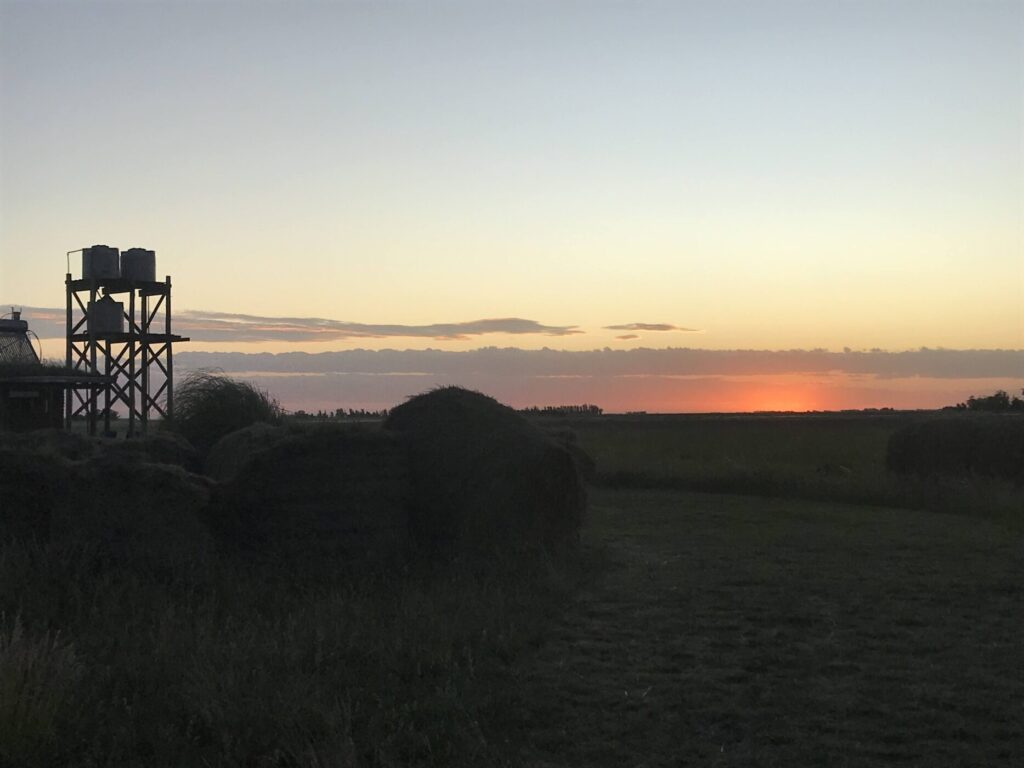
Takeaway #4: American Families Pay to Volunteer in South America
When we were planning our family gap year travelling through South America, we imagined we would spend time volunteering to offset some of the cost of lodging. Apparently, that wasn’t realistic for an American family of five.
We did assume a reasonable financial contribution was in order to offset the cost of feeding us all. But we thought the total price we paid would be reduced in exchange for our labor.
That’s why our jaws dropped to the floor when we first got the price quote for Eco Caminhos. It cost more per week than what we were spending on lodging, car rental, and food while traveling independently. Even after negotiating the price down to the upper limit of our budget, it still cost more. Quinta Esencia was no different, but this time we knew what to expect.
Ani, the other volunteer at Quinta Esencia, was mortified when she found out what we had to pay, confirming our suspicion that we were being treated differently.
So did we get hoodwinked? Bamboozled? One could see it that way. But maybe there’s a better way to look at it.
First, we are a family with three members that occupy beds and eat meals, but contribute little productive value (feeding the chickens aside). Not only that, but those three members not currently enrolled in school (not naming names) have needs that compete with the project’s needs. They cry. They need attention. They need snacks. They demand a drink of water every five minutes. They need to be kept safe from the alluring machetes lying around. Every once in a while, they need to be herded to the kitchen table to practice their times tables and reading.
Then consider that a short-term (three months or less) volunteer, similar to a new employee, consumes more productivity — to train, orient, mentor, entertain, and support — than what they are likely to put in.
And now let’s address the elephant in the room: farm and construction labor in South America is cheap. What they really need from tourist volunteers is not production, but cash. That is something Americans, with a strong dollar, are uniquely able to provide. (You can have a thousand volunteers, but that’s not going to buy you lumber and cement.)
For our part, we’ve been able to participate on the farm at our convenience without the burden of high expectations. The arrangement is highly flexible. We are treated like VIP guests that can follow the work schedule, or not, as we deem necessary, in order to do online work, school our kids, or put the little ones down for a nap.
For the most part, we’ve exceeded expectations in the range of abilities we were able to provide and the time we were able to dedicate (mostly because the kids love the outdoors and can keep themselves busy with only light supervision). Recognizing this, we’ve been told that if we stayed longer, we could stay for free going forward.
But at the end of the day, we’ve made our peace with this arrangement. We got to contribute much-needed capital to projects we believe in. We had great experiences, free from feeling indebted, where we all learned new things and had the satisfaction of building and harvesting with other volunteers.
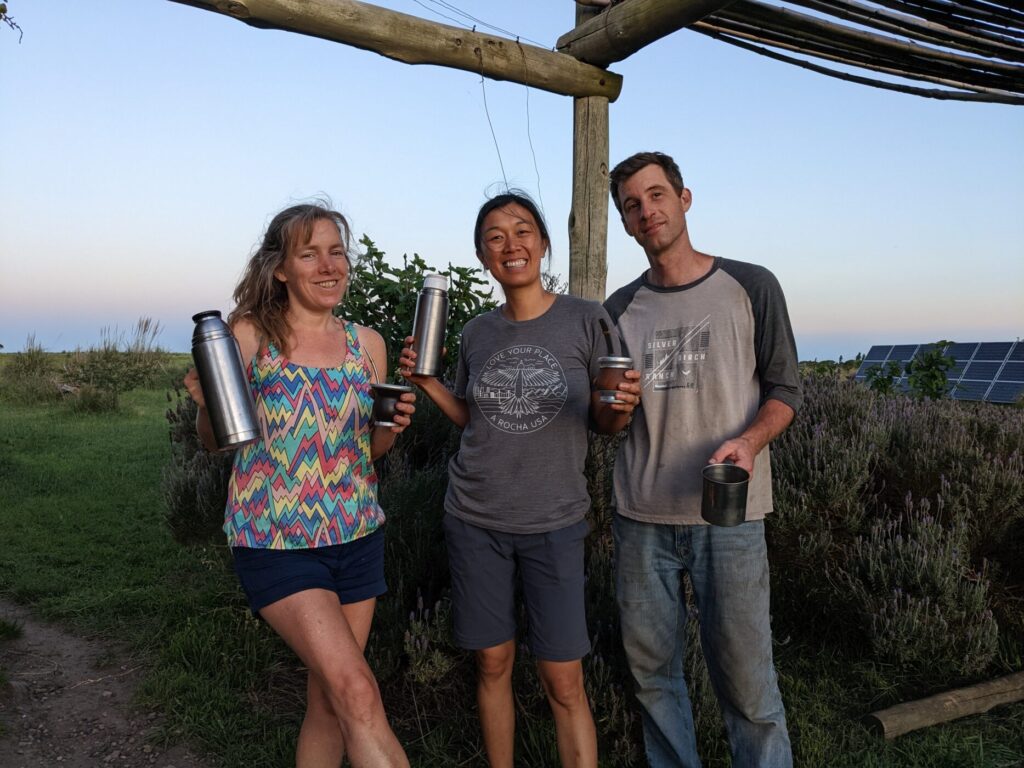
Takeaway #5: Nobody’s Perfect
Permaculture farms have lofty visions. No waste. Clean energy. Local materials. Healthy, regenerative land use. Home-grown or locally-sourced food that is organic and environmentally sustainable.
So it comes as a surprise when you arrive at these farms expecting utopia and a guy is going around with a huge gas-powered weed whacker all day for the dubious purpose of making the edges look neat.
One of the places served meat. Another didn’t (but our host offered to procure our family some if we couldn’t live without).
Both farms we stayed at had dogs on the loose. Unconstrained dogs are devastating for the local wildlife. We witnessed this on our last day at Quinta Esencia when Oliver came through the door tears with a dead bird in hand that he wrested from the mouth of the sweet but brutish Rottweiler.
And then there’s toilet paper. Technically not necessary (bathrooms in Brazil and Argentina often come with a sprayer as an alternative). But the fact that both farms overlooked the wastefulness of this practice made me, ahem, very relieved. (Paititi did not have toilet paper, but Liuan thinks this was unintentional).
Perfect these places were not. It is easy to point out blind spots. Many volunteers did point them out with an air of incredulity. But I don’t think the people running these projects are being hypocritical. These projects can only spur change if they continue to survive and succeed. That often requires a dose of pragmatism when faced with bad options.
It means running a gas-powered pump to fill the water tanks when the crops are wilting in the harsh drought and the windmill pump is out of service. It also means providing a certain baseline of creature comforts. Wasteful as they may be, they ensure that developed-world guests, not accustomed to living without, feel welcome and provided for.
Blind spots aside, these projects model how we could easily do so much better in our conventional lives. Following the Pareto principle, they figure out how to remove eighty percent of the waste and destruction with a mere twenty percent reduction in comfort.
Often, this “reduction in comfort” just means forming new habits. Over time these new habits barely register as an inconvenience. Example of a minor hardship: having to wait until late afternoon or evening to get the hottest shower when using a solar boiler. Or having to think a little harder with six different categories for trash, including a distinction between “cooked” and “non-cooked” organic matter (except for citrus which goes in the “cooked” bin).
A purist mindset would prefer that everyone, especially those engaging in sustainable projects, go the full one hundred percent and never betray their principles. Regardless, these projects show how much can be accomplished while still maintaining a baseline of human comfort.
